SUMMARY
This is AI generated summarization, which may have errors. For context, always refer to the full article.
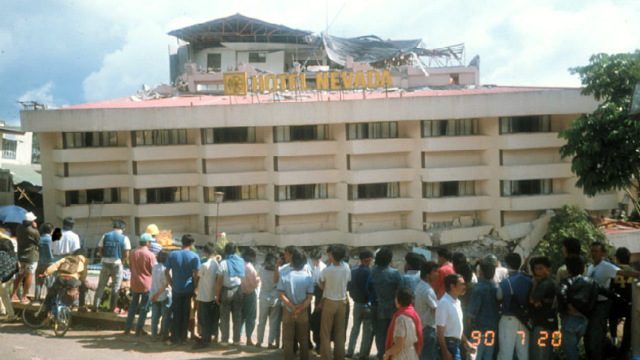
MANILA, Philippines – The morning of Monday, July 16, 1990 was unusually hot for Baguio, Sonia Roco recalled.
The widow of the late Senator Raul Roco was in the City of Pines that fateful day, 26 years ago, to attend a two-day seminar organized by United States Agency for International Development (USAID).
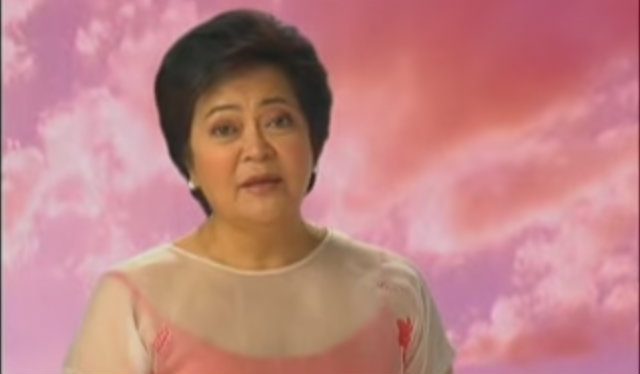
The event was held at the second floor of the Hotel Nevada, a luxurious hotel located right across the main gate of Camp John Hay. Representatives of civil society groups from different parts of the country participated in the workshop, which was supposed to train these groups on how to handle grant funds.
Roco was there as executive director of the Bicol Livelihood Project, the foundation she organized to support her husband while he was congressman of the 2nd District of Camarines Sur. She was accompanied by Peachie, her sister-in-law.
Little did they know that later that day, a magnitude-7.8 earthquake would hit Northern and Central Luzon and destroy the 6-story hotel where their workshop was being held.
The 1990 Luzon earthquake, whose epicenter was near the town of Rizal, in Nueva Ecija province, devastated the cities of Baguio, Dagupan and Pangasinan, killing about 2,412 people.
45 seconds
It happened almost half an hour after the seminar participants were allowed by the organizers to take a break, Sonia recalled.
At 4:26 pm, while participants were taking their merienda, the whole hotel started to shake. Sonia was near the dining hall, just a few steps from the dining table where the food was being served, when the shaking happened.
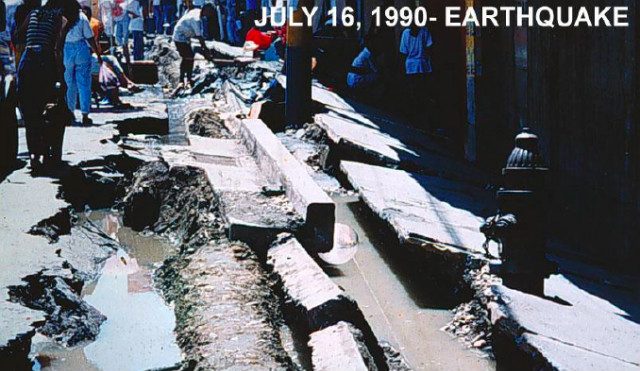
She recalled seeing the chandelier fall. Seminar papers got scattered on the floor. People around her were panicking.
As soon as she felt the shaking, Sonia took two steps to the long seminar table near the dining hall so she could take cover under it. Near the table where the tea was being served, a man initially just stood there with his arms opened wide, in shock about what was happening.
The shaking went on for 45 seconds. Then, there was darkness. “That was my last figure of somebody (that I recalled),” she said. Sonia, then 46 years old, later learned that the man survived the catastrophe. “He ran out really fast.” She, on the other hand, was trapped in the rubble for almost 2 days.
No way out
After the shaking, the floor above them collapsed, causing the table where Sonia was hiding to be broken in half. On her back was a man who died instantly, she recalled.
Three were trapped under that table: a woman named Mia, who was two months pregnant, the dead man, and Sonia. On the other side was her sister-in-law, Peachie. Sonia remembered being able to talk to Peachie hours after they were trapped in the rubble.
“She told me, ‘Nakatuwad ako, naipit ang paa ko.” (I’m on my fours. My feet are stuck.)
Around her, Sonia heard weird gurgling sounds and screaming people.
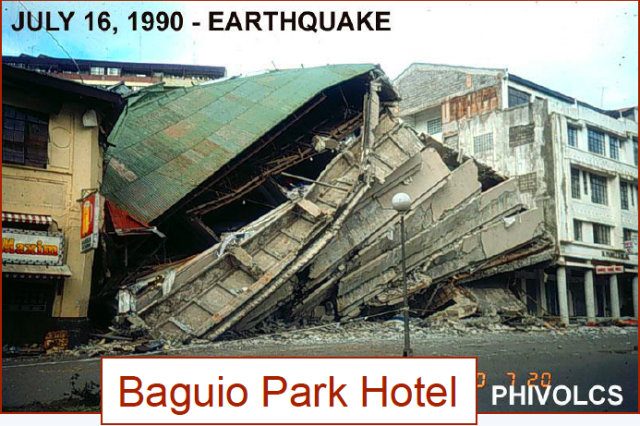
“It was dark,” she recalled. She started groping to get a feel of the things around her. “I felt the papers. The electric fan went inside the table. The chairs [also] went inside, so it sort of gave support. The vase was here, and then outside of the table frame, when you put out your legs, it’s already the ceiling that fell. Then at the back, I knew there was somebody who instantly died,” Sonia said, describing what she remembered.
“You open your eyes, you close your eyes, it’s all black,” Sonia said. Because someone on the other side of the floor had a flashlight, Sonia and the other survivors were initially able to keep track of the time. But it wasn’t long until the battery of the flashlight ran out.
Totally cut off from the outside world, Sonia had no idea of the extent of the damage the earthquake had caused. “In my mind, when it struck, I said this is only an earthquake. I thought it was just specific to our building. I said, just be calm. Be calm,” said Sonia.
Under the table where she was trapped, Sonia had to stay crouched on all fours for a long time because the space was so small. When she got tired, she was forced to lie down and rest her head on the ankle of the dead man.
“The first thing I thought of was my family,” she recalled. “[I thought] will I ever see them again? All I could do was pray and surrender them to God.” She did that for many hours, until she heard the sound of helicopters.
More and more shaking
Outside, rescue groups were working hard to locate and rescue survivors. Since there had been no earthquakes in the area for years, however, they were quite in shock as well.
A number of structures collapsed within the city burying many people alive. Apart from the Nevada Hotel, other establishments destroyed included the Hyatt Terraces Plaza, the Baguio Hilltop Hotel, Baguio Park Hotel, and FRB Hotel.
It is estimated that as many as 1,000 people were trapped and killed in damaged buildings within Baguio City that day.
“Kakaiba. First time mo makakita ng collapsed structure…” (It was extraordinary, my |first time to see a collapsed structure), Colonel Jeff Tamayo, the one who led the Philippine Military Academy’s rescue operations in Baguio Park Hotel and University of Baguio, recalled.
“Magugulat ka eh. Suddenly all of that is washed away or taken away from you. So how are you gonna respond?” (You’ll be shocked. Suddenly all of that is washed away or taken away from you. So how are you gonna respond?)
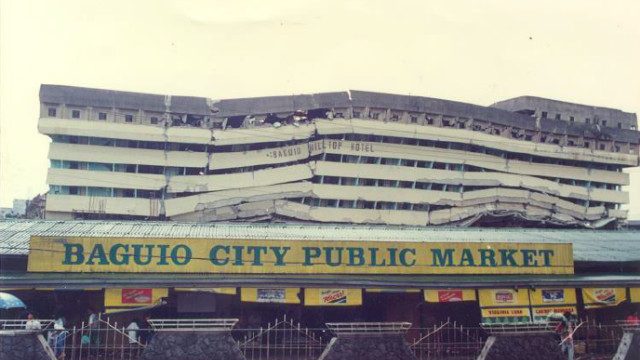
The massive quake shocked a lot of people, Tamayo said. “We are trained, but we were still in shock.”
Unprepared for the massive destruction, rescuers only brought with them basic tools like shovels and sticks. The non-stop aftershocks and continuous rains made everything more difficult.
“Pag nagkaka-aftershock, mayanig masyado so we tended to run out [then go back again]…” (Every time there was an aftershock, it became really shaky so we tended to run out then go back again) Tamayo recalls. He said they were forced to stay on the fourth floor of the University of Baguio.
“Sabi ko nga sa mga kadete, kung gagawin namin ito lagi, baka malaglag tayo sa ground kasi nasa fourth floor yun. Siguro, dito na lang tayo. Tuwing magkaka-aftershock, magti-tinginan na lang kami. Kung baga, ano pang magagawa natin kaysa malaglag tayo sa ground floor,” Tamayo explained.
(If we’re going to do this again and again, I told the cadets, we might fall to the ground, because it was on the fourth floor. Let’s just stay here. So every time an aftershock would occur, we would just look at each other. What else could we do?)
Miners helped
One group that contributed a lot to the rescue effort were the community of miners from nearby mining companies who pitched in to help rescuers bring out the survivors.
“Miners are used to confined spaces,” Tamayo explained. “Collapsed structures for them [are] like going under a tunnel. “They operate in such inhumane [conditions]. They were very acclimatized.”
“The miners were very strong and I’m very, very proud of them,” Tamayo said.
Meanwhile, personnel and officials of the Philippine Institute of Volcanology and Seismology (Phivolcs) also had difficulty because the agency did not have advanced tools yet.
Sent to Baguio to assess the damage, the Phivolcs team also had difficulty making their way through the city.
Bartolome Bautista, Seismology division head at that time, said the only way they were able to communicate with officers in their seismological stations in Baguio was through a radio.
“Baguio was totally isolated and communication was cut off for hours [after the earthquake]. It was also raining at that time so the Department of Public Works and Highways had to clear the roads first,” Bautista said.
Sonia’s rescue
Back at the Nevada Hotel, Sonia recalled hearing helicopters flying all over the place for the first time the morning after the earthquake hit.
At around 8 to 10 am, Sonia started hearing rescuers pounding on the building. Trapped victims had to stop them because the more the rescuers pounded, the more they were being trapped.
At around 6 pm of July 17, volunteers had to leave the hotel because of the non-stop aftershocks. It took a while for rescue efforts to resume.
“We felt we were abandoned. Nobody was talking to us anymore. That was [a] long, long, long, long [time] – until around midnight, [when] we heard people near us [again],” Sonia said.
At 12 midnight of Wednesday, July 18, volunteers from the Benguet Mining Corporation arrived at the Nevada Hotel and started rescue operations from the basement. Victims who were saved helped the miners by describing the layout of the second floor. Sonia finally heard her husband’s voice.
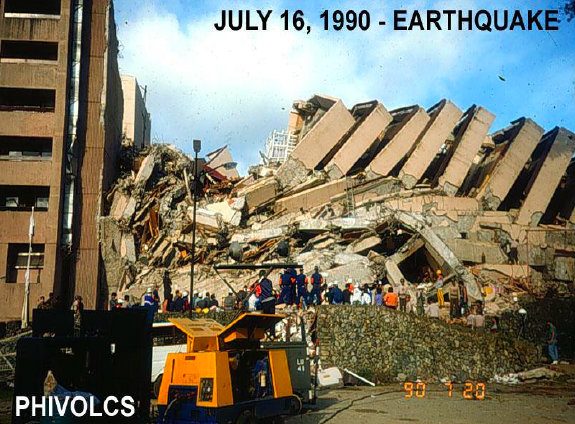
“Wow, what that contact was, really. It sort of made me cry. Among us, there was a written code [among the survivors] that nobody should break down, but apparently I broke down [when I heard his voice],” Sonia said.
But it took 3 more hours before rescuers were able to get near her. At 3 am of July 18, rescuers were able to bore a hole up to the point beside Sonia’s foot. Their group was given bottles of water to sip. Mia, the pregnant woman, was the first to get out.
When it was Sonia’s turn to be pulled out, a really strong aftershock occurred, causing the rescuers to leave. They came back 20 minutes later.
Finally at 4 am on July 18, rescuers were able to get Sonia out. By that time, Peachie was no longer breathing.
“Before I jumped off, I asked the people in the area how Peachie was. I said, check the pulse. They said, ‘No more na, no more.’ My question that time was ‘Why was I saved and not Peachie?’” Roco said.
Massive destruction
The Rocos rode an ambulance to get to the nearest hospital while the miners stayed to help other victims. When she reached the nearest hospital, Sonia noticed that everybody was out on the roads because of non-stop aftershocks.
It wasn’t until they were on a helicopter that Sonia realized how strong the earthquake was.
“Raul was fast asleep, while I was looking [below] and I saw how massive the destruction was. There were buildings on fire,” said Sonia.
Many of those who attended the USAID workshop perished under the rubble of the Nevada Hotel. Only 10, including Sonia, survived. – with reports from Gwen de la Cruz/Rappler.com
Next: Faith and science: Lessons from the 1990 Luzon Earthquake
Add a comment
How does this make you feel?
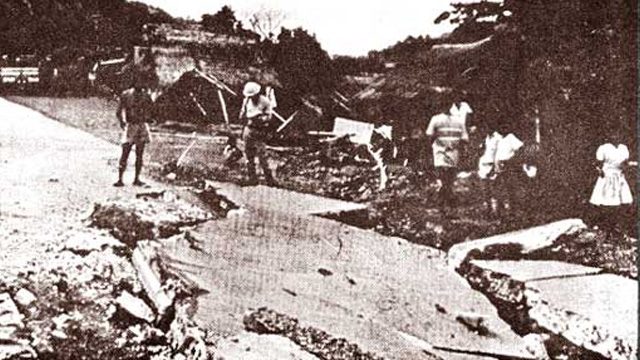
There are no comments yet. Add your comment to start the conversation.